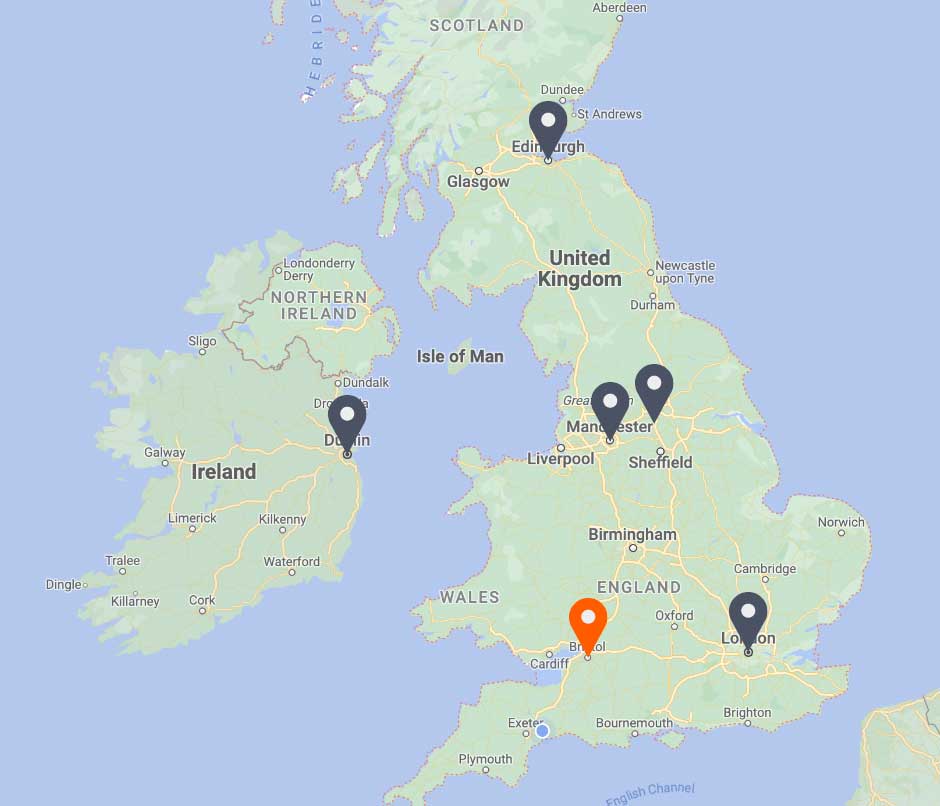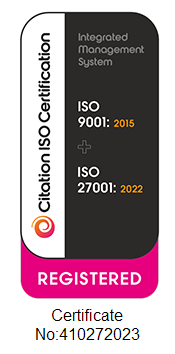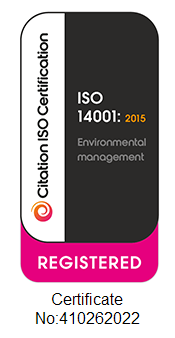THIS ARTICLE AT A GLANCE
CONTACT ETS
If you have any questions or would like to discuss further what you should be doing, ETS is here and willing to help.
Call 0117 205 0542
Email enquiries@energy-ts.com
Submit a contact form
CHECK OUR SERVICES
F-Gas Regulations: The Impact on Facilities Managers

INTRODUCTION
WHAT ARE THE F-GAS REGULATIONS?
Following global accords from the Montreal, Kyoto and the recent Paris discussions and agreements regarding the reduction in emissions, the EU set a timeframe in 2014 for a phased ban on the use of fluorinated greenhouse gas (F-Gas).
This regulation / legal requirement aims to reduce the use and the manufacture of harmful Hydrofluorocarbons (HFC F-Gas). Commenced in 2015, all F-gases with high global warming potential (GWP) will be phased-out in a staged manner, with the total ban of up to 80% of certain F-Gases by 2030.
WHAT DOES IT THIS MEAN PRACTICALLY?
F-Gas refrigerants with a high GWP score will become more and more scarce. The first phase will see manufacturers no longer reselling equipment. The second phase will then see the scaling down of new virgin HFC gases that fall into this high GWP scoring category. Then finally, there will be a complete service ban on recycled and stock refrigerants.
Details of bans on F-Gas in new equipment can be found on the GOV.UK web site.
The eventual phase-out on certain gases will result in older RAC plant equipment (chillers, refrigeration and AC equipment) becoming either very expensive to source HFC refrigerant for, or worse case scenario, the unit becomes unusable as they cannot be retrofitted to use the new gases with the low threshold GWP.
This legislation is similar to the previous phase-out and ban on Chlorofluorocarbons (CFC) which included regulations to control the use and manufacture of Hydrochlorofluorocarbons (HCFC blended gases) such as R22, R502, and many more.
WHAT ARE THE IMPLICATIONS OF F-GAS REGULATIONS TO NEW EQUIPMENT?
It is anticipated that new equipment will cost slightly more due to the HFC regulations, but not that much more if installing refrigeration systems with lower GWP gases. However, there are a few additional factors to take into consideration.
- The overall cost to replace old equipment for new – the cost to remove and dispose of banned refrigerant will increase considerably.
- New units may have a slightly lower Coefficient of Performance (COP), therefore they could be less energy efficient if using lower threshold blended gases. It is important to seek advice and don’t just consider the cheapest option.
- Other environmentally friendly solutions / alternatives will cost more unless they are factored into new building design.
WHAT ARE THE IMPLICATIONS OF F-GAS REGULATIONS TO EXISTING EQUIPMENT?
It is imperative that building owners and FM agents seek advice on where their equipment sits regarding HFC F-Gas regulations as consideration needs to be given to the following:
- The impending ban on certain HFC gases. The cost to supply certain HFC gases has risen by 30% or more since 2014.
- Retrofitting older units to accept a more environmentally HFC gas with a lower GWP threshold; it is important to seek specialist advice, as your RAC plant may not have the capability to be modified.
- Keeping hold of HFC stock on-site or doing nothing and keeping the old plant operational to some degree; this is not advisable as the F-Gas regulation will also apply to holding stock. In addition, the time-frame for a complete service ban on certain HFC is fast approaching so, buying expensive gas to keep in stock and then having to possibly dispose of it is not very cost effective.
How to mitigate risk?
As a building services engineering consultancy, we recommend that organisations undertake a building service inspection / performance audit and produce a comprehensive asset register, recording the refrigerant type and amount of all RAC equipment.
Additional attention must be paid to recent TM44 inspection reports. It is vital to undertake all necessary repairs or recommendations that are deemed important with regards to these new F-Gas regulations.
Furthermore, a life-cycle profile report should be produced on the current condition of the equipment considering the following: what are the operational and maintenance costs? what will be the cost to replace it, including the disposal of the unit and the gas within?
To summarise, it is important that you seek advice and do it soon. We at ETS can assist and guide you through these tightening regulations that could have significant implications for your properties.
Final thoughts
If you are looking for an energy management system that is tailored to your business needs, ETS can provide you with 25 years of experience in dramatically improving energy efficiency and reducing environmental impacts. Whether your businesses have individual assets or large international portfolios, ETS can assist you in saving substantial amounts of money while significantly reducing your carbon performance.
To discuss your requirements, get in touch. You can contact us by calling 0117 205 0542 or drop us an email at enquiries@energy-ts.com.
Related Articles
8 Ways Businesses Can Reduce Energy Use in the Workplace This Winter
Discover how to comply with ESOS Phase 4 and unlock energy-saving opportunities for your business. This guide explains the requirements, highlights key deadlines, and provides actionable strategies. Learn how energy audits, tailored action plans, and expert support can reduce costs, improve efficiency, and align your organisation with sustainability goals.
ESOS Action Planning: Complying with Phase 4 and Implementing Energy Saving Strategies
Discover how to comply with ESOS Phase 4 and unlock energy-saving opportunities for your business. This guide explains the requirements, highlights key deadlines, and provides actionable strategies. Learn how energy audits, tailored action plans, and expert support can reduce costs, improve efficiency, and align your organisation with sustainability goals.
Important Update: What You Need to Know about ESOS Phase 3
Time is ticking for the ESOS Phase 3 deadline. The Environment Agency announced that the reporting system is available now. For organisations qualifying for ESOS Phase 3, the deadline for submitting a compliance notification is 5 June 2024, and organisations should still look to meet this compliance notification deadline where possible.
Related Article
8 Ways Businesses Can Reduce Energy Use in the Workplace This Winter
Discover how to comply with ESOS Phase 4 and unlock energy-saving opportunities for your business. This guide explains the requirements, highlights key deadlines, and provides actionable strategies. Learn how energy audits, tailored action plans, and expert support can reduce costs, improve efficiency, and align your organisation with sustainability goals.
ESOS Action Planning: Complying with Phase 4 and Implementing Energy Saving Strategies
Discover how to comply with ESOS Phase 4 and unlock energy-saving opportunities for your business. This guide explains the requirements, highlights key deadlines, and provides actionable strategies. Learn how energy audits, tailored action plans, and expert support can reduce costs, improve efficiency, and align your organisation with sustainability goals.
Important Update: What You Need to Know about ESOS Phase 3
Time is ticking for the ESOS Phase 3 deadline. The Environment Agency announced that the reporting system is available now. For organisations qualifying for ESOS Phase 3, the deadline for submitting a compliance notification is 5 June 2024, and organisations should still look to meet this compliance notification deadline where possible.









































































